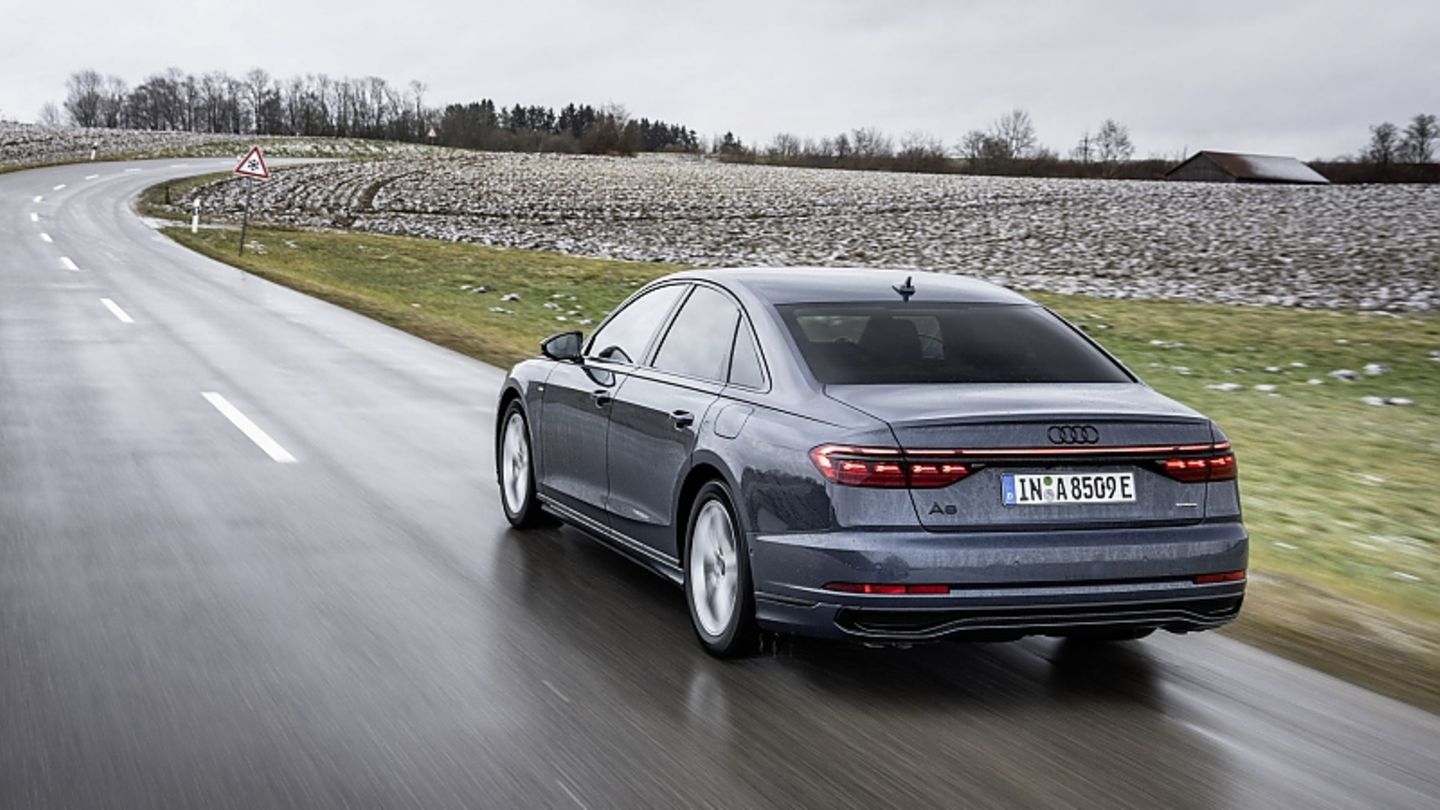Audi refreshes its luxury flagship A8. Not much has changed on the outside, but a lot has changed in terms of battery technology. Other cells than before help the plug-in hybrid variant to have a longer range.
Something has definitely happened with the electric drive module. Instead of pouch battery cells, 104 prismatic Samsung energy storage devices in 13 modules are now used. Each of these new batteries now has a current capacity of 48 Ah, which is 11 Ah more than before the facelift. Logically, this leads to an increase in battery capacity from 14.1 kilowatt hours previously to 17.9 kWh energy content (14.4 kWh net). This increase in battery capacity works with the available space and so the strategy of the VW Group to design the batteries in such a way that the cells can be changed without any problems actually pays off. Of course, this also has an effect on the purely electric nominal range, which has increased from the previous 46 kilometers to up to 59 kilometers. When we started our test drive, the on-board computer promised us at least 53 kilometers of carefree Stromern.
The electric motor in the eight-speed automatic still contributes up to 100 kW / 136 hp (continuous output 60 kW / 82 hp) and a torque of 400 Newton meters to the higher system output of now 340 kW / 462 hp (previously 330 kW / 449 hp). The maximum torque of 700 Newton meters promises the smoothness that one would expect from a luxury sedan. The supercharged V6 petrol engine with 250 kW / 340 hp bears the brunt of the propulsion. The driving performance remains unchanged and is still impressive: After 4.9 seconds, the Audi A8 60 TFSI e reaches 100 km/h and at 250 kilometers the electronics drop anchor. Purely electrically, the limit is still 135 km/h.
During our test drive, a third of which was on motorways, we let the system decide when which engine should be used and recorded a consumption of 6.7 l/100 km or 12.8 kWh/100 km. It has to be mentioned that we only drove faster than 150 km/h once and rarely in city centers with stop-and-go traffic. The “Battery Charge” driving mode, in which the combustion engine is used to pump electricity into the batteries, is new. The battery is charged by around one percent for every kilometer driven. Only from a charge level of 80 percent does the combustion generator fill the power storage more slowly. This way of refueling the energy storage is not the most efficient, but if you want to drive into an environmental zone with restricted access, this option helps. To activate this mode, however, you have to delve a bit into the depths of the vehicle settings menu via the infotainment touchscreen. If you charge the Audi A8 60 TFSI e quattro with the maximum output of 7.4 kW, the batteries are full after two and a half hours.
The plug-in hybrid A8 does not have the predictive chassis that ensures comfort in the Audi S8. Added to this is the higher weight of around 320 kilograms compared to the Audi A8, which is only equipped with the V6 engine. Even the best air springs cannot completely conceal such an additional load, so the 2,310-kilogram Audi A8 with plug-in hybrid drive does not quite achieve the chassis comfort of the other variants. But we’re talking about Champions League level here and when Audi’s big sedan glides silently over the streets, it makes up for a lot. The driving performance not only reads confidently, but also feels like it.
If you let the navigation system show you the way, the predictive assistant helps to make the journey as efficient as possible. Taking into account the traffic, the speed limits and the topography of the route, the software allocates the energy of the battery in such a way that ideally you arrive at your destination with empty batteries. To support the driver, the gas pedal pulses when you should lift your right foot. If that annoys you, you can also deactivate it via the infotainment monitor. But with the luxury class sedans, the cards are mixed differently and the reference usually comes from Stuttgart-Untertürkheim or Sindelfingen and compared to the Mercedes S-Class, the overall Audi A8 package draws the short straw. Of course, the Mercedes is a newer car, but the Ingolstadt company could have shortened the gap even more with a facelift. The interior of the Audi is made of one piece, the workmanship is flawless and the materials are noble. Here you feel like you are in a comfortable, elegant, classic lounge. The dashboard of the S-Class with the large tablet and the three-dimensional instrument display and the flying arrows in the head-up display has a more modern look.
Source: Stern
I am a 24-year-old writer and journalist who has been working in the news industry for the past two years. I write primarily about market news, so if you’re looking for insights into what’s going on in the stock market or economic indicators, you’ve come to the right place. I also dabble in writing articles on lifestyle trends and pop culture news.




